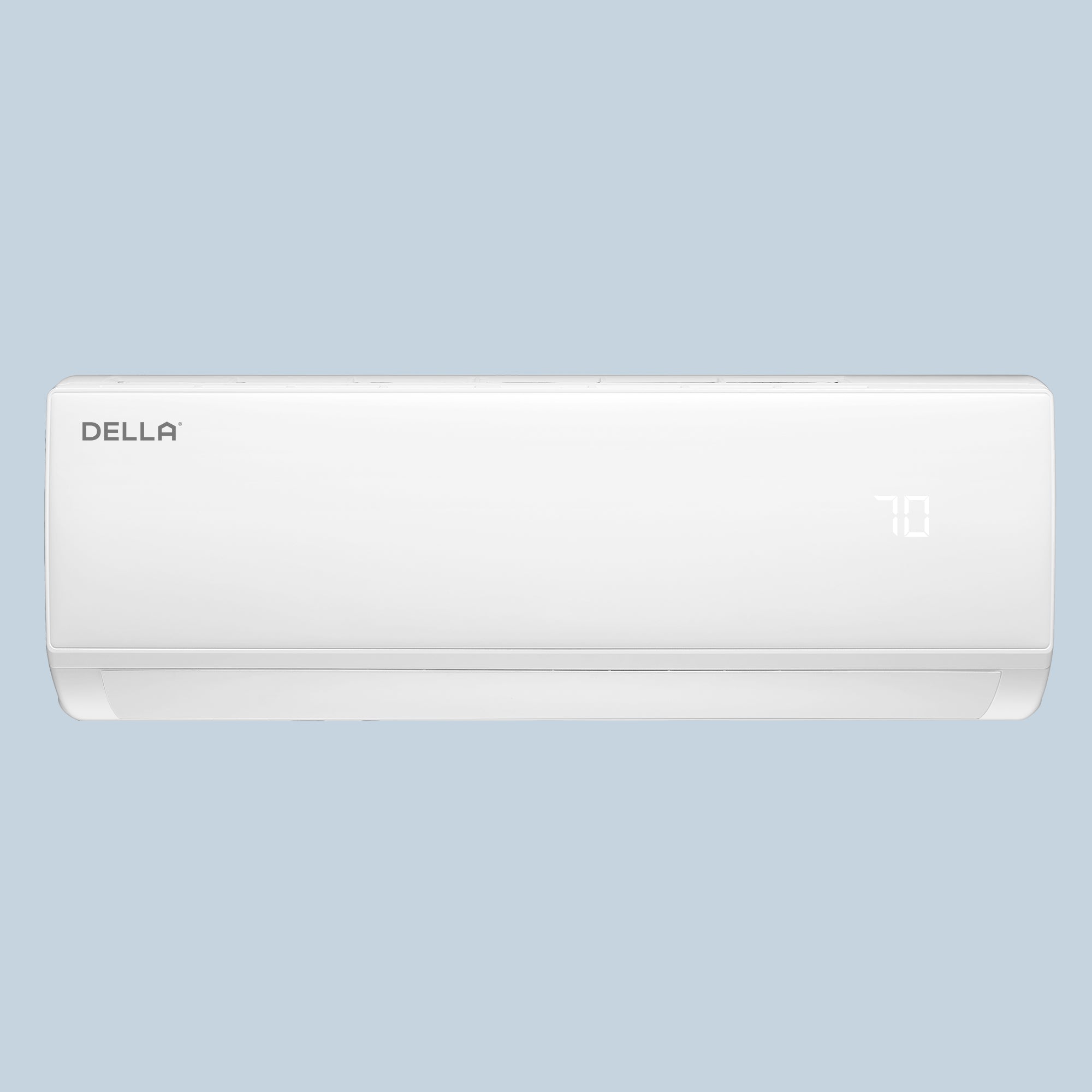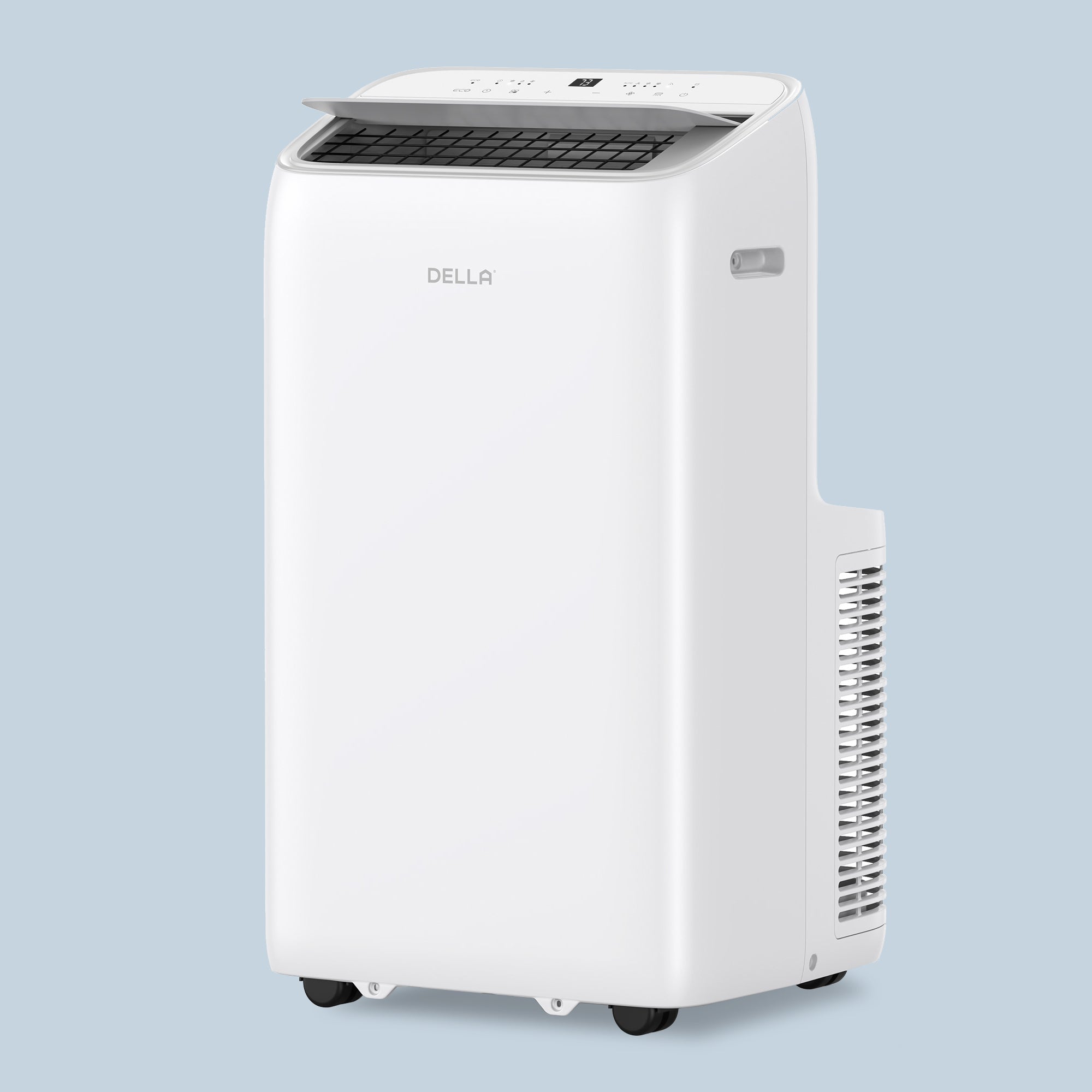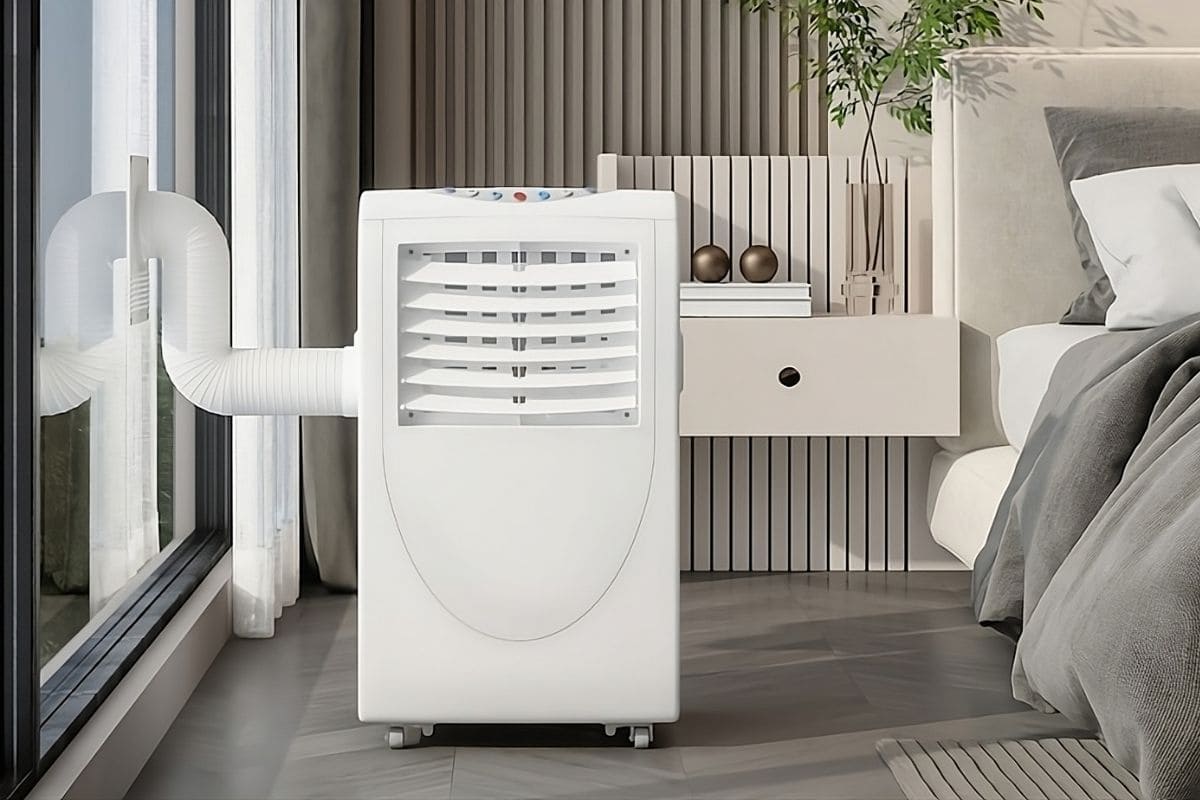As an ideal air conditioner for small room, a properly vented portable air conditioner offers significant benefits, such as improved efficiency and prevention of overheating. However, not all rooms have windows for venting. Don’t worry— we’ve got you covered. We will provide 6 methods and step-by-step guides to help you effectively use your portable air conditioner even in rooms without windows. Read on!
Method 1: Vent Portable AC through Door
-
Measure door width and height and AC exhaust hose diameter.
-
Prepare door vent kits by purchasing or DIY using plexiglass or foam board.
-
If you purchase door vent kits, follow manufacturer's instructions. If you do DIY, cut the plexiglass or foam board to fit the door and hole for the hose.
-
Connect the exhaust hose by attaching one end to the mobile home air conditioner unit and securing the other end to the door vent.
-
Seal any gaps and apply weatherstripping or foam tape around edges.
-
Test if there are gaps and if the portable AC works normally.
Method 2: Vent Portable Air Conditioner through the Wall
-
Pick a spot on the wall near your portable air conditioner for vent installation.
-
Purchase a Venting Kit, including hose, wall venting kit, and adapters.
-
Mark the spot on the wall, then cut a hole to fit the venting kit.
-
Insert and secure the wall venting kit in the hole.
-
Attach one end of the hose to the wall vent and the other end to the portable air conditioner.
-
Seal any gaps around the hose and wall vent to prevent air leaks.
-
Turn on the air conditioner to check for proper venting and make any necessary adjustments.

Method 3: Vent Portable Air Conditioner into Drop Ceiling
-
Choose a location close to your portable air conditioner.
-
Prepare a venting kit, including a hose and a ceiling venting adapter suitable for drop ceilings.
-
Remove the ceiling tile where you plan to install the vent.
-
Cut a hole in the ceiling tile that is sightly smaller than the size of the venting adapter for a snug fit.
-
Insert the adapter into the hole in the ceiling tile.
-
Connect one end of the hose to the ceiling venting adapter and the other end to your portable air conditioner.
-
Place the tile back into the ceiling grid, ensuring the hose is properly routed and not pinched.
-
Turn on your portable air conditioner to check the venting setup. Make sure there are no leaks and the airflow is fluent.
Method 4: Vent Portable AC through Dryer Vent
-
Check that the dryer vent is large enough to accommodate the portable air conditioner’s hose and that it is accessible.
-
Prepare a venting kit includes a hose and an adapter for connecting to the dryer vent.
-
Take off the cover or grille from the dryer vent and expose the duct.
-
Connect the venting adapter to the end of the portable air conditioner’s hose and the dryer vent duct.
-
Use a sealant or tape to ensure a tight fit and prevent air leaks.
-
Place the cover or grille on the dryer vent, making sure it is aligned properly and does not obstruct the hose.
-
Turn on your portable air conditioner and check for proper airflow. Ensure there are no air leaks or obstructions in the venting setup.
Method 5: Vent Portable AC through a Chimney or Fireplace
-
Purchase a venting kit that includes a hose and adapter suitable for a chimney.
-
Prepare the chimney by opening the damper and removing any flue or cover if needed.
-
Install the adapter by attaching it to the hose and inserting it into the chimney.
-
Seal and secure the setup by using sealant around the adapter to prevent leaks and ensuring the hose is properly positioned.
-
Check airflow by turning on the air conditioner and verifying that it is venting correctly.

Method 6: Vent Portable Air Conditioner into Attic
-
Choose a spot in the attic near the portable air conditioner for venting.
-
Get a venting kit with a hose and adapter for attic use.
-
Cut a hole in the ceiling or wall of the attic, if needed, slightly larger than the adapter.
-
Install the adapter in the hole, and connect the hose to the adapter and the portable air conditioner.
-
Seal any gaps to improve efficiency.
-
Turn on the air conditioner and check for proper airflow and no leaks.
Things to Consider before Venting Your Portable AC
Based on the guides above, you can easily do all of the installation, but there are still some things to consider when doing so to ensure the best exhaust results for portable AC:
Keep the Portable AC Hose as Short as Possible
A shorter hose reduces airflow resistance, improves exhaust efficiency, and enhances cooling performance while saving energy and costs.
Avoid Bending the AC Hose
Bending the hose restricts airflow and raises pressure and heat, which reduces cooling efficiency. Keeping the hose straight ensures smooth hot air flow and better performance of the portable air conditioner.
Reduce Aesthetic Impact
Think about how the venting setup will look in your space and if it might interfere with the room’s appearance or functionality.
Ease Your Maintenance
Choose a venting option that is easy to maintain and clean to ensure long-term performance and efficiency.
Consider Your Cost
Factor in any costs associated with installation or modifications needed for different venting methods.
FAQ
How frequently should I clean the venting hose?
It’s recommended to clean the venting hose every 3 months, or more often if you notice a reduction in cooling efficiency. Regular cleaning helps prevent blockages and ensures smart portable ac optimal performance.
Is it possible to use a portable air conditioner in a humid climate?
Yes, you can use a portable air conditioner in a humid climate. Many portable air conditioner models are designed to handle high humidity levels and include a dehumidification feature to help manage moisture in the air. For more information, please check out our article of the topic on "How Do Portable Air Conditioner Work?"
Can I lengthen the hose of my portable air conditioner?
You can extend the hose, but it’s best to keep it as short as possible. Longer hoses can reduce efficiency and airflow, so use only a manufacturer-approved extension if needed.
Do all portable air conditioners require venting?
Yes, all portable air conditioners require venting. Portable AC units need to expel the hot air they remove from the room to maintain efficient cooling. This is typically done through a venting hose that directs the hot air outside, usually via a window, door, or wall. Without proper venting, the unit would not be able to effectively cool the room, and its efficiency would be significantly reduced.








LEAVE A COMMENT
All comments are moderated before being published.
This site is protected by hCaptcha and the hCaptcha Privacy Policy and Terms of Service apply.